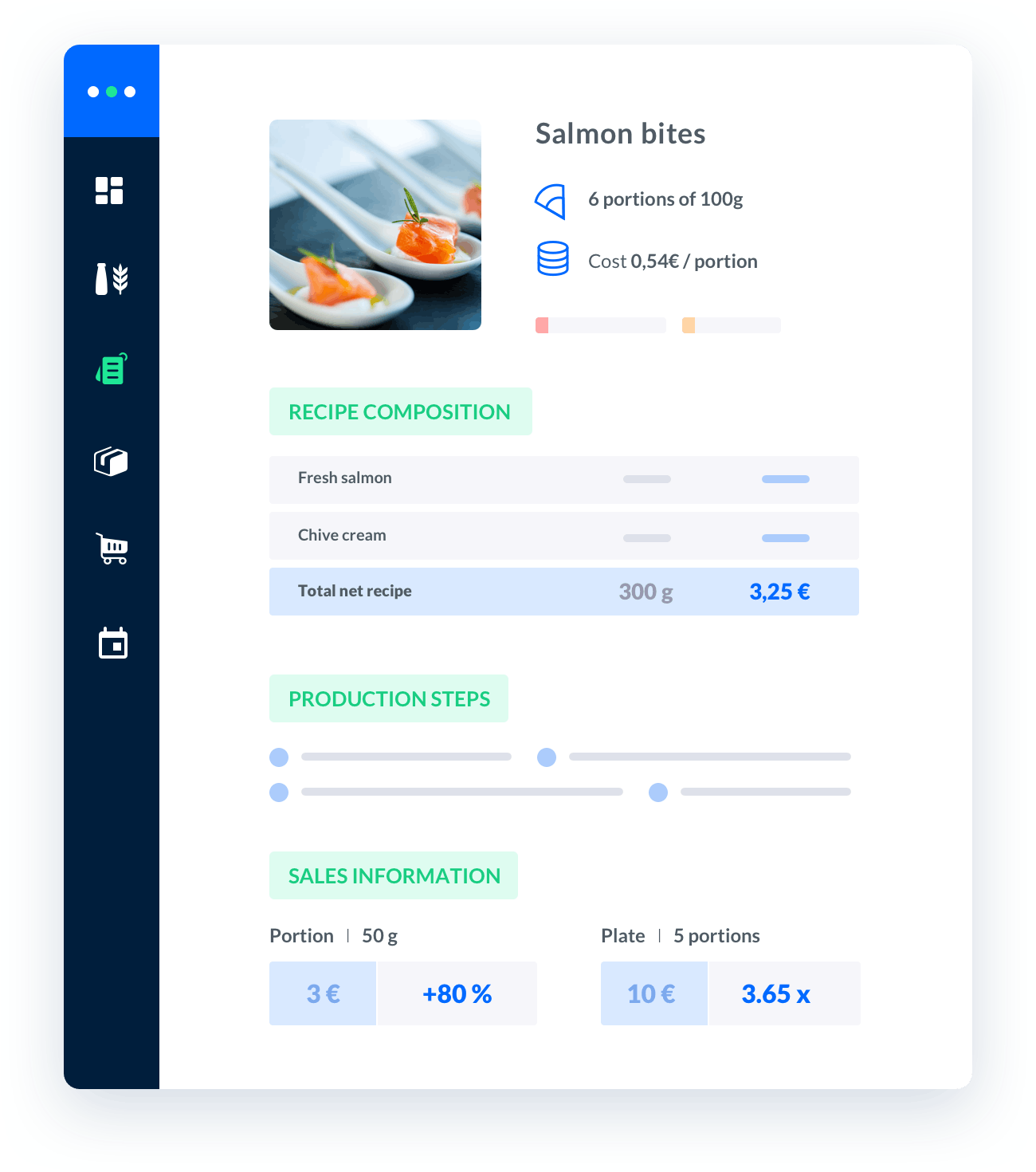yield percentage food calculator
" Understanding Yield Percentage and Its Importance in the Food Industry In the ever-evolving world of the food industry, precision and efficiency play a crucial role in determining success.Whether you're a chef, caterer, or food business owner, one essential aspect you cannot overlook is yield percentage.

Melba: the food cost app to optimize the profitability of your restaurant
Discover how to optimize the profitability of your restaurant with melba

The ultimate guide to food cost restaurant
Learn more about the food cost basis and how to reduce your food cost percentage
Understanding Yield Percentage and Its Importance in the Food Industry
In the ever-evolving world of the food industry, precision and efficiency play a crucial role in determining success. Whether you're a chef, caterer, or food business owner, one essential aspect you cannot overlook is yield percentage. Calculating the yield percentage of your food products allows you to optimize your resources, reduce waste, and ultimately improve your profitability. In this comprehensive guide, we'll delve into the significance of yield percentage and how to calculate it accurately using a food calculator.
What is Yield Percentage?
Yield percentage, also known as food yield, is a metric used to determine the amount of usable product obtained from a raw ingredient or food item after processing. It quantifies the efficiency of a cooking process by measuring the percentage of usable product compared to the original weight or volume of the raw ingredient. Yield percentage is a vital factor in recipe costing, menu planning, and inventory management for any food-related business.
Why is Yield Percentage Important?
Understanding the yield percentage of your food products offers several benefits to your business:
- Cost Control: By accurately measuring yield percentage, you can estimate the exact amount of raw ingredients needed for a recipe. This helps in minimizing food waste and controlling costs.
- Menu Planning: Yield percentage allows you to determine the appropriate portion sizes and quantities required to meet customer demand while maximizing profitability.
- Recipe Standardization: Calculating yield percentage enables you to maintain consistency in the quality and quantity of your food products, ensuring customer satisfaction.
- Inventory Management: Accurate yield percentage data helps in managing inventory levels, reducing excess stock, and preventing shortages.
Calculating Yield Percentage
To calculate the yield percentage of a food item, you need to follow a systematic approach. Here's a step-by-step guide to help you accurately determine the yield percentage:
Step 1: Weigh the Raw Ingredient
Begin by weighing the raw ingredient or food item before any processing. Use a reliable kitchen scale to obtain the most accurate measurement possible. Record the weight in a standardized unit such as grams or ounces.
Step 2: Process the Ingredient
Process the raw ingredient according to your recipe or specific requirements. This may involve cleaning, trimming, peeling, deboning, or any other preparation steps. Ensure that you remove any inedible parts or waste generated during processing.
Step 3: Weigh the Final Product
Once the processing is complete, weigh the final product obtained after processing. Similar to step 1, use a reliable kitchen scale and record the weight in the same unit as before.
Step 4: Calculate the Yield Percentage
Now, it's time to calculate the yield percentage using the following formula:
Yield Percentage = (Final Product Weight / Raw Ingredient Weight) x 100
Simply divide the weight of the final product by the weight of the raw ingredient, then multiply the result by 100 to obtain the yield percentage.
Example Calculation
Let's consider an example to better understand the yield percentage calculation. Suppose you have a raw ingredient weighing 500 grams, and after processing, the final product weighs 400 grams. Using the formula mentioned earlier, the yield percentage would be:
Yield Percentage = (400 / 500) x 100 = 80%
Therefore, the yield percentage of this particular food item is 80%.
Factors Affecting Yield Percentage
It's important to note that several factors can influence the yield percentage of a food item. These factors include:
- Trimming and Cleaning: The extent of trimming and cleaning required for a particular ingredient can impact the final yield.
- Moisture Loss: Some food items tend to lose moisture during processing, leading to a reduction in overall yield.
- Shrinkage: Cooking processes such as roasting or grilling can result in shrinkage, affecting the yield percentage.
- Bone-in vs. Boneless: Different cuts of meat with bones will yield varying percentages compared to boneless cuts.
Benefits of Using a Food Yield Calculator
While manually calculating yield percentage can be time-consuming, there are several food yield calculators available that simplify the process. These calculators offer the following advantages:
- Accuracy: Food yield calculators ensure precise calculations, minimizing the chances of human error.
- Time Savings: By automating the calculation process, food yield calculators save valuable time for food industry professionals.
- Data Organization: Calculators often provide options for storing and organizing yield percentage data for future reference.
- Efficiency: With the ability to calculate yield percentages quickly, you can streamline your recipe costing and menu planning processes.
Conclusion
Yield percentage is a crucial metric for any professional in the catering industry. By accurately determining the yield percentage of your food products, you can optimize your resources, reduce waste, control costs, and improve overall profitability. Remember to consider the factors that influence yield percentage and leverage the benefits of using a food yield calculator to streamline your operations. Incorporate yield percentage calculations into your recipe costing and menu planning processes, and witness the positive impact it can have on your food business.
"





